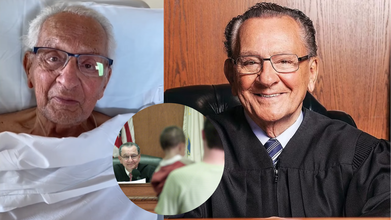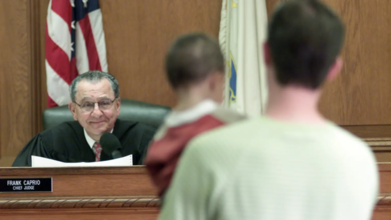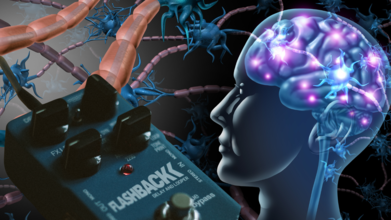- Health Conditions A-Z
- Health & Wellness
- Nutrition
- Fitness
- Health News
- Ayurveda
- Videos
- Medicine A-Z
- Parenting
- Web Stories
With 23,000 Confirmed Cases, Oropouche Virus Raises Public Health Concern– All About The 'Neglected Tropical Disease'

(Credit-Canva/WHO)
Oropouche fever is a viral disease caused by the Oropouche virus (OROV). It's mainly spread by tiny biting insects called midges. For over 70 years, this disease was mostly found in the Amazon region, especially in Brazil, Peru, and Ecuador, with about 500,000 known infections. However, the true number of cases was largely unknown, making it a "neglected tropical disease."
To understand this, a May 2025 study published in the Current Research in Microbial Sciences gave us a timeline and why this disease has become an issue now. In 2024, OROV rapidly spread beyond its usual Amazon home. It moved across Brazil and into other parts of South and Central America. Cases have even been reported in North America and Europe, showing that it's becoming a bigger global health worry.
Also Read: How Abortion Policies Have Changed Across States Since Dobbs Ruling
The current outbreak, which started in 2023 and is ongoing into 2025, has hit Brazil, Peru, Bolivia, Cuba, and Panama hard. This outbreak is linked to a new type of OROV that came from the Brazilian Amazon. This new virus has created new ways of spreading throughout South and Central America, and it's likely moving internationally because more people are traveling by air.
As of early 2025, there have been over 23,000 confirmed cases worldwide, including five deaths. The virus is clearly spreading into areas it didn't affect before. Along with this spread, OROV infection is now more often linked to severe health problems, such as, Guillain-Barré syndrome which is a serious condition affecting the nervous system. Vertical transmission is also an issue. This is when a virus passes from a pregnant mother to her baby, leading to miscarriage and birth defects.
The new OROV causing the current outbreak is also more harmful, better at avoiding the body's defenses, and spreads more easily, which likely contributes to its epidemic potential.
Also Read: IBS Cases Surged During COVID-19 Pandemic, Study Finds
Oropouche Virus: Who is The Most At Risk?
A 2025 study published in the Nature Communications, the Oropouche virus (OROV) has shown that it can cause more severe illness and serious problems during pregnancy, including miscarriages, stillbirths, and even newborn deaths. It seems the virus might be passing from mother to baby.
Their research shows that OROV can indeed infect and make copies of itself within human placenta cells and tissues, including the syncytiotrophoblast cells that are usually resistant to germs. The virus grew very quickly within the first 24 hours after infection. We also noticed that earlier pregnancies might be more easily infected by the virus.
Oropouche Virus Disease: What Regions Have Been Affected the Most?
The Centers of Disease Control and Prevention (CDC) details that the Oropouche virus was first found in 1955 in a forest worker who had a fever in a village called Vega de Oropouche, in Trinidad and Tobago. The virus is naturally found in the Amazon basin.
Before the year 2000, outbreaks of Oropouche virus were reported in Brazil, Panama, and Peru. There was also evidence that animals were infected in Colombia and Trinidad during this period. In the past 25 years, cases have been identified in many more countries, including Argentina, Bolivia, Brazil, Colombia, Ecuador, French Guiana, Panama, and Peru. A child in Haiti was also found to be infected in 2014.
In late 2023, the Oropouche virus began causing large outbreaks in both areas where it's typically found and in new parts of South America. By June 2024, Cuba reported its first confirmed case. For the most up-to-date information on where the virus has spread, you can check resources like "Countries and Territories with Recent or Previous Oropouche Virus Transmission." Currently, there's no evidence that the virus is spreading locally within the United States.
Oropouche Virus Symptoms
According to the World Health Organization (WHO), it takes to get sick after being bitten by an infected insect (called the incubation period) for the Oropouche virus is usually 3 to 10 days. When someone gets sick, they might experience symptoms like fever, headache, joint pain, muscle pain, chills, nausea, vomiting, and a rash.
Most people get completely better within 7 days of their symptoms starting. However, for some, recovery can take weeks. In rare cases, serious problems like aseptic meningitis (a swelling of the brain's protective layers) can happen. While deaths from OROV infection weren't reported before, in 2024, there were two reported deaths in young, healthy adults who had the infection.
Oropouche Virus Disease Diagnose & Treatment
To diagnose Oropouche virus disease, doctors typically use special lab tests called RT-PCR and real-time RT-PCR. Blood tests (serologic assays) can also help with diagnosis, but these need to be done by highly trained staff in labs with proper safety equipment. Currently, there are no quick commercial tests (like those for flu or COVID) available for Oropouche.
There is no specific medicine to treat Oropouche virus disease. Treatment mostly focuses on supportive care to help relieve the symptoms.
Is Oropouche Virus Preventable?
WHO explains that there is no vaccine available to prevent Oropouche virus disease. The best ways to stop the virus from spreading are through controlling the insects that carry it and by protecting yourself.
Standard mosquito nets aren't very effective against the tiny biting midges that spread Oropouche, as these insects are small enough to get through the netting. However, fine mesh bed nets and chemical sprays used on the walls of infected buildings have been shown to work well.
To protect yourself, it's recommended to wear protective clothing and use insect repellents that contain ingredients like DEET, IR3535, or icaridin. Currently, there is no evidence of local transmission of Oropouche virus in the United States.
Frequently Asked Questions
- Can Oropouche virus spread locally outside endemic areas?
No local transmission has been detected outside affected regions; all international cases are travel-related.
- What insects spread Oropouche virus?
Tiny biting midges are the primary carriers, though some mosquito species can also transmit the virus.
- Should travelers avoid visiting affected areas?
Travel isn't restricted, but use strong insect repellent and protective clothing in Latin and Caribbean destinations.
TV’s ‘Nicest Judge’ Frank Caprio Shares Heartbreaking Cancer Update: ‘Keep Me In Your Prayers’

Credits: AP/Instagram@therealfrankcaprio
For over three decades, Judge Frank Caprio was hailed as "the world's kindest judge." From the bench of Providence Municipal Court, he warmed the hearts of millions with his compassion, impartiality, and uniquely human style of justice. With the Emmy-nominated series Caught in Providence, his moments of mercy went viral, transforming ordinary court appearances into acts of kindness that struck a chord that went far beyond the borders of Rhode Island.
Now, at age 88, the man famous for providing others with a second chance is grappling with his own greatest challenge: pancreatic cancer. And consistent with Caprio's style, he's confronting it with courage, humility, and a sincere plea for prayers.
For close to 40 years, Frank Caprio presided over hearings in Providence, Rhode Island, hearing everyday individuals frequently saddled by parking tickets, small infractions, and personal dilemmas. But in a departure from the most typical courtroom hearings, his remained chances for mercy.
He would waive fines for low-income families, tell jokes to calm worried defendants, and say that justice can be more than just punishment - it can also be compassion. His motto was straightforward, there is a human behind every case file.

That spirit made headlines around the world when Caught in Providence was broadcast. By 2017, videos of Caprio's moments in the courtroom went viral, garnering more than 15 million views on the internet. To many, he was a symbol of compassion within an otherwise brutal system.
Frank Caprio's Health Setback That Shook His Fans
In 2023, Caprio announced that he had been diagnosed with pancreatic cancer, the most aggressive type of the disease. In spite of the bleak prognosis attached to this diagnosis, he finished undergoing radiation treatments in 2024 and posted optimistic reports, even publishing a new book.
But in the earlier part of the year, Caprio returned to social media with some more sobering news. From his hospital bed, he gazed straight into the camera and once again requested prayers.
"Last year I asked you to pray for me, and it's very obvious that you did, because I came through a very difficult period," he stated. "Unfortunately I've had a setback and I'm back at the hospital."
Caprio's message was both honest and stoic. "I believe the almighty above is watching over us. So please remember me," he added.
For his millions of fans, the request was poignant—but it also captured the same humility and genuineness that had made him so popular on the bench.
What Is Pancreatic Cancer?
Pancreatic cancer arises in the pancreas, a small organ located behind the stomach that is an essential part of digestion and blood sugar management. Though comparatively uncommon, it has one of the lowest five-year survival rates of all major cancers. The American Cancer Society states the five-year survival rate at a mere 13%.
A recent poll conducted by The Ohio State University learned that misapprehensions concerning the disease continue to abound. Over half of Americans younger than 50 claimed that they would not realize early symptoms of pancreatic cancer. One third felt that only older people were susceptible, and 37% believed nothing could be done to reduce their risk.
The reality is more nuanced. While pancreatic cancer is disproportionately found among older adults—average age at diagnosis is 70—incidence among younger people is on the rise. Obesity, diabetes, and excessive alcohol consumption have been suggested as driving factors. Pancreatic cancer ranks among the biggest challenges faced due to the relative impossibility of finding it early. Symptoms tend to present themselves vague and easily dismissed. They can be:
- Unexplained weight loss
- Loss of appetite
- Abdominal or back pain
- Digestive problems
As the tumors increase, jaundice (yellowing of the eyes and skin) can occur, with dark urine, pale-colored stool, or pruritus (itchy skin) in some cases.
Since these symptoms are not overt, most individuals fail to seek medical attention until the illness is advanced. For anyone suffering from these symptoms, professionals advise immediate consultation with a healthcare provider.
Common Misconceptions And Real Risks About Pancreatic Cancer
The October survey highlights the disconnect between perception and fact:
Myth 1: Only elderly people develop pancreatic cancer. Although elderly people are still the most impacted, lifestyle is contributing to the development of cases among younger individuals.
Myth 2: There is nothing you can do to reduce your risk. Actually, lifestyle options like quitting smoking, avoiding too much alcohol, being at a healthy weight, and managing diabetes help decrease risk significantly.
Myth 3: Early symptoms are apparent. Pancreatic cancer symptoms are not like those for skin or breast cancer and are frequently nonspecific and may be confused with other illnesses.
Although no one can completely preclude developing pancreatic cancer, some measures can be taken:
Stop smoking: Pancreatic cancer risk is twofold in smokers but falls dramatically after quitting.
Be at a healthy weight: Obesity is associated with increased risk, and diet and exercise are key preventive strategies.
Control diabetes: Type 2 diabetes over the long term is a recognized risk factor; maintaining blood sugar under control could reduce risk.
Drink in moderation: Excessive alcohol consumption is associated with both pancreatitis and pancreatic cancer.
Learn your family history: Approximately 10% of cases are associated with inherited mutations like BRCA1, BRCA2, or Lynch syndrome. Genetic counseling is advised for those who are at high risk.
While Frank Caprio fights cancer, the support that's poured out is a testament to how deeply he has impacted lives beyond his courtroom. Posts and messages from across the globe continue to pour into his social media sites, saying thank you, stay strong, and praying for him.
Caprio’s story also serves as a broader reminder: health challenges, even for those who seem larger than life, are a human equalizer. His openness about his condition helps shine a light on pancreatic cancer—an often overlooked but deadly disease.
At 88, Judge Caprio continues to teach. Just as he asked for compassion in his courtroom, he now asks for awareness, empathy, and proactive health vigilance. And as he battles this fight, he reminds us that strength is not the absence of vulnerability it's the courage to seek help.
These 5 Medical Conditions Sound Too Weird To Be True - Pt 1

Credits: Canva
When it comes to health, most of us are familiar with the usual suspects: fevers, colds, maybe a sprain or two. But the human body and brain are capable of some truly strange malfunctions that sound more like plots from horror movies or fairy tales than real medical diagnoses. Yet, as odd as they may sound, these conditions are very real, with documented cases and medical research to back them up.
Here are five of the weirdest medical conditions that prove truth can sometimes be stranger than fiction.
Werewolf Syndrome (Hypertrichosis or Ambras Syndrome)
Imagine waking up one day with hair covering nearly every inch of your body, except your palms and the soles of your feet. That is what life can look like for people with Werewolf Syndrome. Officially known as Hypertrichosis or Ambras Syndrome, the condition leads to abnormal and excessive hair growth.
According to the Genetic and Rare Diseases Information Center, individuals may also develop a triangular face, a bulbous nose, or even suffer from missing teeth. It’s a rare genetic disorder, passed down as a dominant trait. So, if one parent has it, there’s a chance the child could inherit it too.
Cases of this syndrome have fueled myths and legends about wolf-men for centuries, and even inspired characters like Lon Chaney Jr.’s iconic “Wolf Man” in Hollywood. But for those living with it, it is a lifelong medical reality rather than a mythical curse.
Facial Blindness (Prosopagnosia)
Most of us forget names occasionally, but what if you couldn’t recognize faces at all—even those of close family or friends? That’s the reality for people with Prosopagnosia, commonly called facial blindness.
The condition stems from abnormalities or damage in the brain, often due to injury, stroke, or neurodegenerative diseases. In some cases, people are simply born with it, a form known as congenital prosopagnosia.
Prosopagnosia doesn’t mean poor memory in general. A person with it may recall voices, clothing, or mannerisms perfectly but be unable to identify someone by their face. In severe cases, some patients struggle to distinguish between a face and an inanimate object, or even fail to recognize their own reflection.
It’s a condition that can make everyday interactions complicated, sometimes isolating, as people often mistake it for rudeness or disinterest.
Sleeping Beauty Syndrome (Kleine-Levin Syndrome)
Fairy tales speak of Sleeping Beauty drifting into years of slumber. In reality, a rare disorder named Kleine-Levin Syndrome, also known as Sleeping Beauty Syndrome, causes people to sleep for extraordinarily long stretches of time.
Episodes can last days or even weeks, with affected individuals sleeping up to 20 hours a day. When awake, they may display unusual behaviors such as binge eating, hallucinating, or even acting childishly. Strikingly, the majority of those affected are adolescent males, according to the National Institute of Neurological Disorders and Stroke (NINDS).
There is no permanent cure, but stimulant medications may help manage symptoms. Fortunately, the episodes tend to decrease with age, often fading by adulthood. Still, for those experiencing it, life can feel like being trapped in a storybook, only without the happily-ever-after.
Mad Cow Disease and Its Human Counterpart
Most people have heard of Mad Cow Disease, scientifically known as Bovine Spongiform Encephalopathy (BSE), which affects the brain and spinal cord of cattle, causing them to behave erratically or aggressively.
While humans don’t catch BSE itself, a related illness called variant Creutzfeldt-Jakob Disease (vCJD) can occur. This rare but fatal brain disorder is thought to be linked to eating beef contaminated with infected tissue.
The U.S. Food and Drug Administration and the World Health Organization both note strong evidence connecting vCJD with mad cow outbreaks, though proving direct transmission remains complex. Infected brain tissue develops spongy holes, leading to memory loss, personality changes, and severe neurological decline.
Thankfully, the number of cases worldwide is small. Still, its very existence once sparked widespread fear about food safety, making it one of the most infamous “weird” diseases of modern times.
Alien Hand Syndrome
Of all the bizarre conditions, Alien Hand Syndrome may be the most unsettling. Imagine one of your hands moving on its own, buttoning a shirt, grabbing objects, or even hitting you, without your conscious control.
That is what people with Alien Hand Syndrome experience. The disorder arises from brain damage due to stroke, tumors, or neurodegenerative diseases. Patients often describe the rogue limb as if it has its own will, and some even give their “alien” hand a name.
While treatments exist, such as Botox injections, behavioral therapy, or simply keeping the hand occupied, there is no permanent cure. Pop culture famously depicted this in the movie Dr. Strangelove, where a character’s hand keeps saluting against his will.
7 Minutes Of Life: The Science Behind What Happens To Your Brain After You Die

Credits: Canva
What happens in the brain at the moment of death has fascinated doctors, philosophers, and ordinary people for centuries. Myths and religious traditions have long spoken of a “life review,” where your past flashes before your eyes. Modern science, for the first time, is beginning to catch glimpses of what really unfolds in the final minutes after the heart stops.
A widely discussed idea is that the brain may continue working for about seven minutes after death, potentially giving rise to vivid flashes of memory and awareness. Recent studies suggest this may not be just folklore.
Recording the Dying Brain
In 2022, doctors in Canada made a startling discovery. They were monitoring an 87-year-old patient with epilepsy when he suddenly suffered cardiac arrest. As his heart stopped, the electroencephalogram (EEG) kept recording his brain activity. What they saw was astonishing: rhythmic brain waves that resembled those seen during memory recall, dreaming, or meditation.
The researchers noted surges in gamma oscillations, which are linked to conscious processing, learning, and memory retrieval. It was as if the man’s brain was playing back moments of his life in a final act of reflection. This provided the first direct evidence that the dying brain may remain active, even organized, after the heart has stopped.
Also Read: What Happens To Human Bodies After Death?
Seven Minutes of Life
The “seven minutes of life” theory emerged from similar findings. When the heart ceases to beat, blood flow to the brain stops, but neurons do not die immediately. Instead, they enter a state of frantic activity as they are starved of oxygen. During this short window, electrical surges ripple across the cortex, creating what some scientists describe as a last burst of consciousness .
Some neurologists believe this window could be responsible for the life-flashing-before-your-eyes phenomenon reported in near-death experiences. Memories may be triggered by abnormal synchronization of neurons, creating vivid, movie-like recollections.
Near-Death Experiences and Life Reviews
The connection between this brain activity and near-death experiences (NDEs) is striking. Studies of cardiac arrest survivors show many report floating above their bodies, seeing tunnels of light, or meeting deceased loved ones. Others describe a panoramic replay of their life events, sometimes accompanied by feelings of peace and detachment.
Dr. Sam Parnia’s large-scale AWARE studies monitored hundreds of patients across multiple hospitals during cardiac arrest. While most did not survive, some who were revived reported precise details of events in the room while they were clinically dead, as well as intense memory flashbacks. These reports align with the idea that the brain, far from shutting down instantly, lingers in a state of heightened, unusual activity.
The Brain’s Last Burst
Neuroscientists suggest that this “last burst” could be explained by the physiology of dying neurons. As oxygen levels plummet, neurotransmitters like glutamate flood the brain. This overstimulates neurons, causing them to fire in abnormal, synchronized ways. Gamma oscillations may peak during this time, briefly sustaining complex conscious experiences.
In animal studies, rats that suffered cardiac arrest showed spikes of coherent brain activity within 30 seconds of death. Human data now confirm similar patterns. Although brief, this activity may be enough to produce vivid subjective experiences.
Consciousness After Death: Science or Spirituality?
These findings raise profound questions. If the brain continues to generate conscious-like activity minutes after death, does this blur the boundary between life and death? Is the “life review” a final, natural brain function, or does it hint at something beyond?
While many scientists caution against overinterpreting the results, others see the possibility of bridging neuroscience and spirituality. The universality of near-death reports across cultures suggests there may be common biological mechanisms at work, yet their meaning remains open to interpretation.
Some traditions describe this as the soul’s transition, while neurologists see it as a natural byproduct of oxygen-starved neurons. Either way, the dying brain appears far from silent.
Redefining Death
Traditionally, death was declared when the heart stopped beating. Today, medicine recognizes that death is a process rather than an instant. Brain activity may persist for minutes, and in rare cases of resuscitation, patients return with memories of those moments. This challenges both how we define death and how long doctors should wait before making the declaration.
Modern guidelines already recommend observing a patient for several minutes after cardiac arrest before pronouncing death. Discoveries about lingering brain activity add further weight to this caution.
© 2024 Bennett, Coleman & Company Limited

